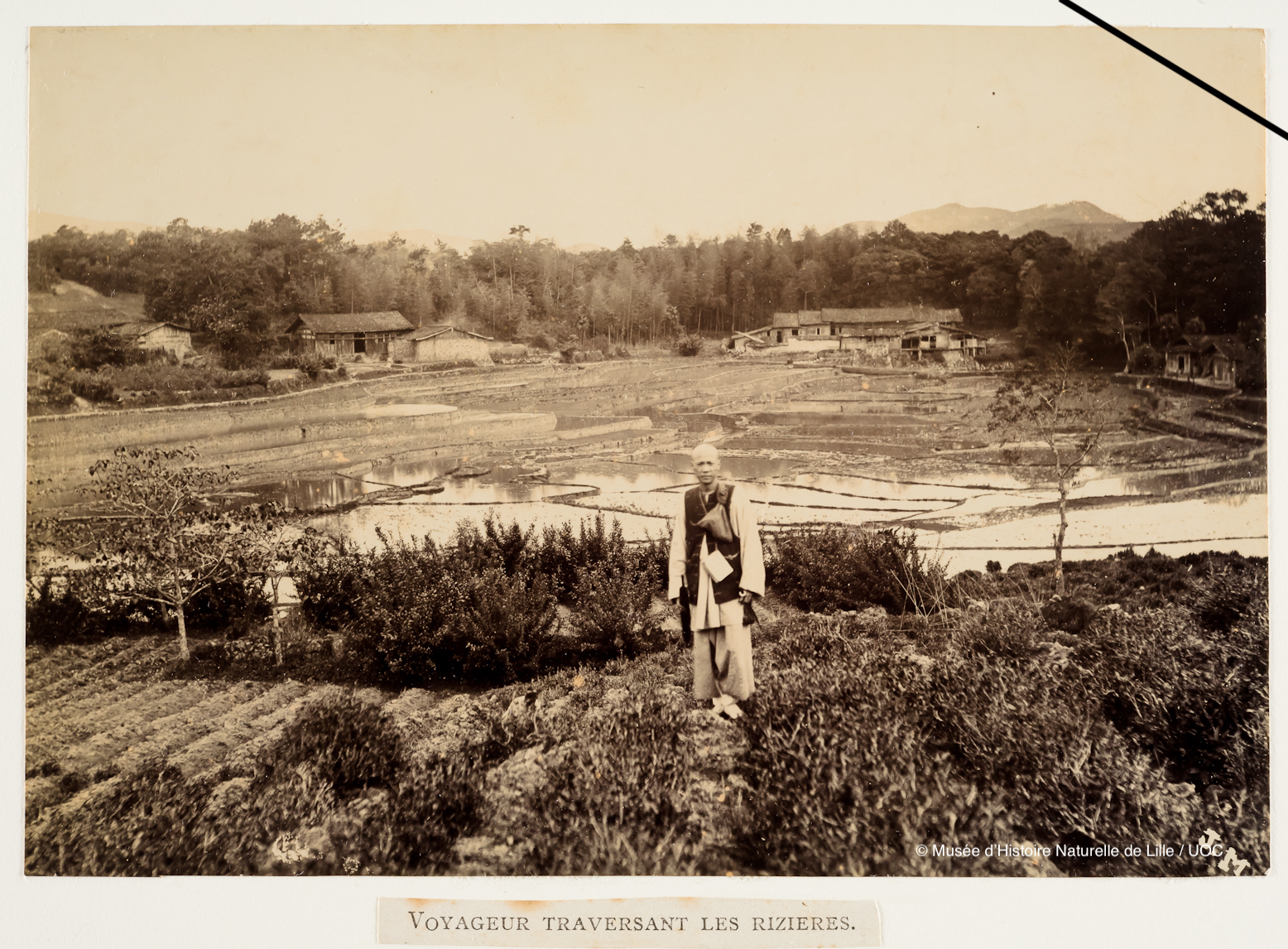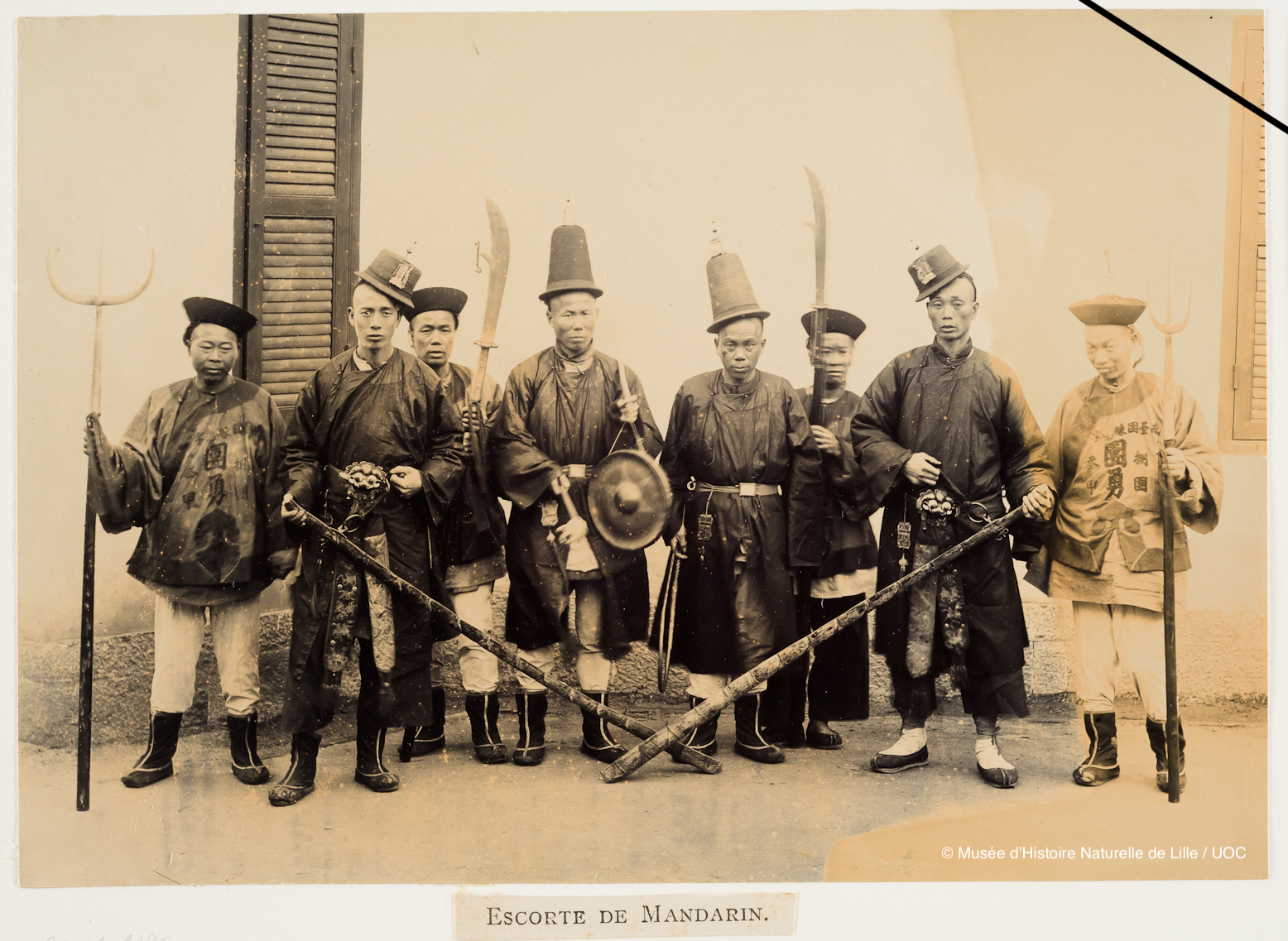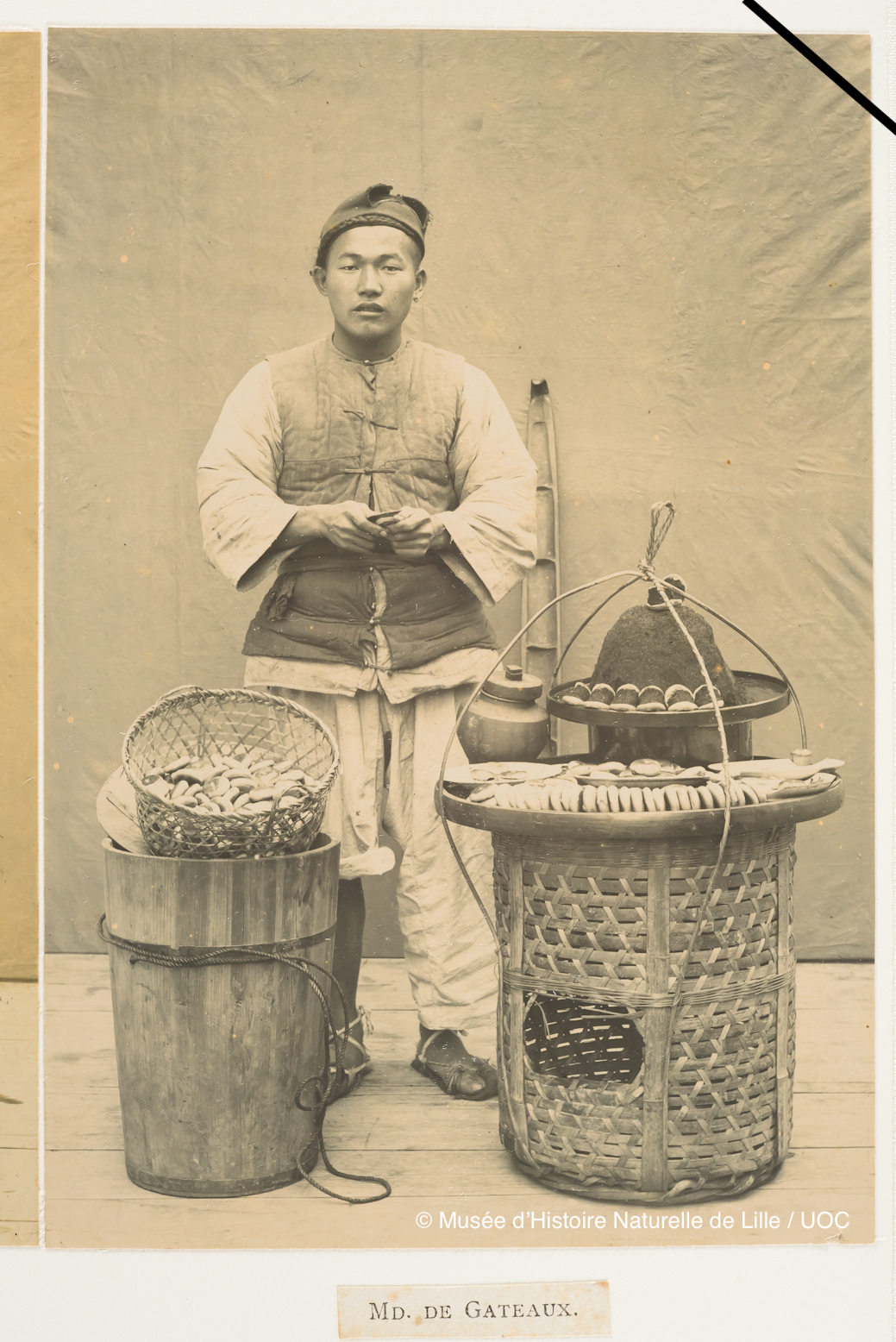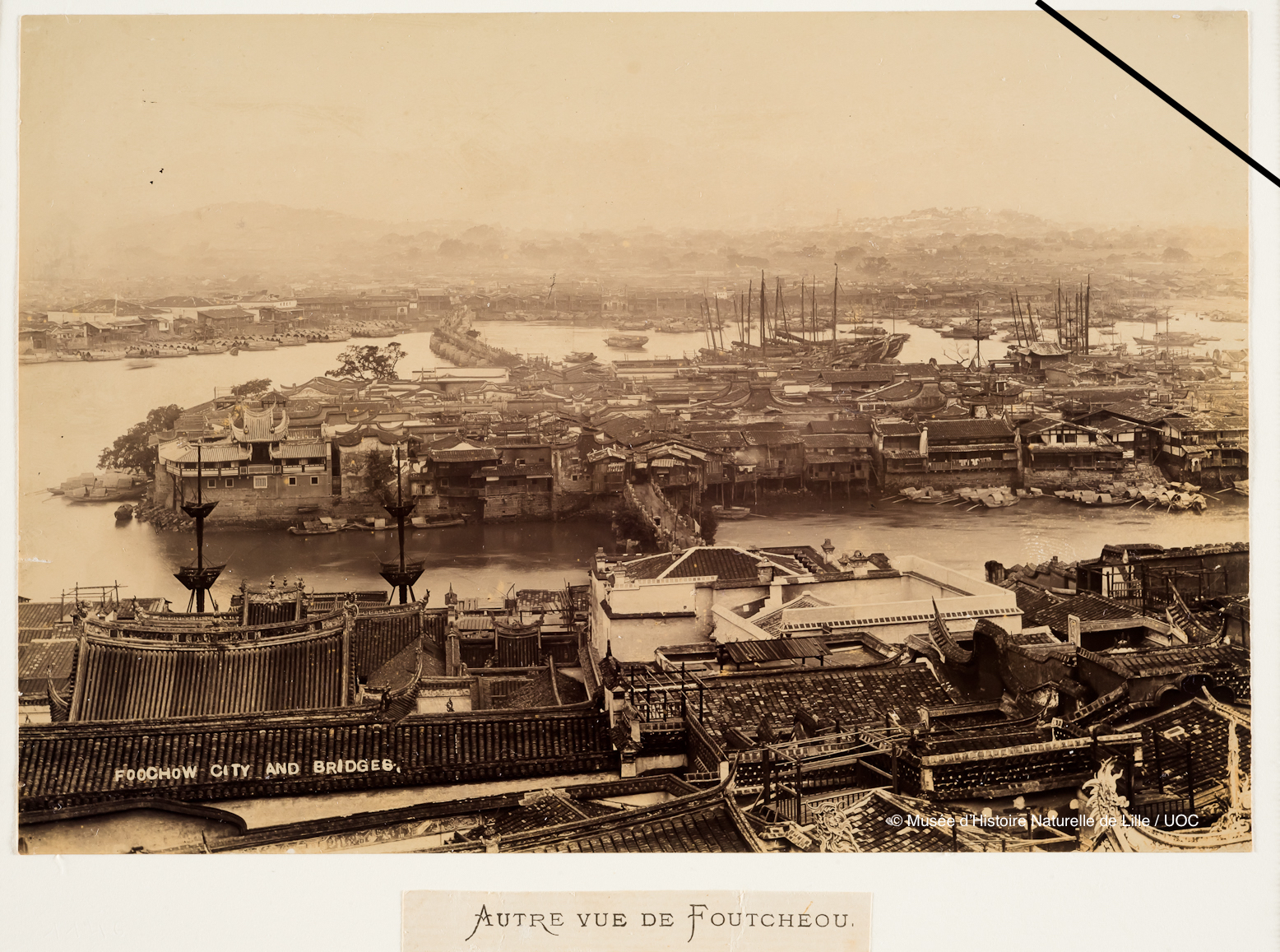On the 5th of October, the Foundation of Confucius Institute Barcelona together with the ALTER (a research group from Open university of Catalunya) presented a photograph exhibition “The Frandon Album: photographies of Juan Mencarini in Fuzhou, 1890s”.
The exhibition showed series of digital printed photographies which have been originally taken by Juan Mencarini – a Spanish descent Italian businessman, collector, funder and cross-cultural interpreter in Fuzhou, south of China during 1890s. Through Mencarini’s camera, the living condition, economical situation as well as artistic and cultural references of the 19th century in Fuzhou, China can be interestedly found. Shortly after the opening of the exhibition, Dr. Xavier Ortells-Nicolau, the exhibition curator and Dr. Carles Prado-Fonts, Dr. David Martinez-Robles, Dr. Rocío Ortuño Casanova had a half day seminar and academic discussion about research topics relevant with the exhibition.
The curator Dr.Xavier Ortells-Nicolau has been delightedly invited to have an interview in this post. (Dr.Xavier Ortells-Nicolau- XO, Mei Huang – MH)

Exhibition view 1, **Please note: the reproduction rights belong to the Natural History Museum of Lille and UOC
MH: What brings you to do research of this topic? and where your inspiration comes from?
XO: About four years ago, research group ALTER at University Oberta de Catalunya (UOC) decided to examine a period in Sino-Spanish relationships previously overlooked in academic literature. The minor role of Spain in 19th century imperialist adventures in China seemed to inform the idea that diplomatic and cultural exchanges were minimal during 19th and early 20th century. i.e., a book like Zhang Kai’s «中国与西班牙关系史» (2003) jumps from coolie trade between Xiamen and Cuba to the 1930s, when civil war in Spain and Japanese aggression in China triggered the feeling of a common fight against fascism.
ALTER’s research has proved otherwise. Not only there were many books published about China in Spain, translations (or indirect translations) of Chinese books, presence of China in the news, etc., but there was also a significant presence of Spanish interests in China at the time. Juan Mencarini is an example.
For my dissertation on contemporary photography in China, I explored the history of photography in China. As a joined the project of the group, I dedicided to look for Spanish photographers in the treaty ports. I knew that Mencarini, a Customs Service employee, had dallied with photography but the findings overpassed our expectations.
MH: Could you please do a brief introduction of the your research and this exhibition?
XO: In addition to his professional career (first as Customs Service employee, later as import-export impresario), Juan Mencarini was an accomplished amateur photographer and promoter of amateur photography in China. He was instrumental in organizing the first associations of amateur photography in Shanghai and Fuzhou at the end of the 19th century.
The French honorary consul in Fuzhou, Ernest Frandon, who was gathering information about the local economy, commissioned commissioned Mencarini to obtain photographs. The result were two albums, titled Commerce, Industrie, Outils, Ustensiles, Meubles, Vetements, Costumes, Types des Habitants du Fokien, with over 120 photographs illustrating Fuzhou’s agriculture, local industries and crafts, population and scenery.
The story of how I found this albums is a wonderful case of academic exchange. Claire Roberts, who briefly mentions Mencarini in her book Photography in China, directed me to art historian Régine Thiriez, who had looked into Mencarini’s photographs in the early 2000s. In turn, Dr. Thiriez directed me to the Musée Guimet in Paris and the Musée d’Histoire Naturelle in Lille. For her part, historian Nicole Tixier assisted me about the chambers of commerce commission. I have also had the opportunity to meet Juan Mencarini’s granddaughter, Rosario Ruiz, who lives in Madrid and who keeps an amazing memory and friendly disposition at her advanced age.
The two collections we located in France, which are almost identical, are truly amazing. It is surprising that they have not been more amply studied and incorporated in the burgeoning body of works on early photography in China. In the wake of John Thomson’s photographs in the region, Mencarini (always an amateur) deployed compositional and technical solutions that separate him from other amateurs. For example, he created an ad hoc studio to maximize light exposure and homogenize the subjects, in order to convey the idea of catalogue or series. In this sense, his photographs have a very ‘contemporary’ flavor, and echo the work of many contemporary photographers.

Exhibition view 2, **Please note: the reproduction rights belong to the Natural History Museum of Lille and UOC
MH: Could you introduce yourself and how you build your relationship with China related topics?
XO: I visited China for the first time in 2001 and was impressed by the energy of its changes and the resilience of the local culture. My studies of Chinese and East Asian Studies eventually took me to Columbia University, where I worked under scholars like Weihong Bao and Guobin Yang. For my dissertation I tried to systematize the large body of works by experimental Chinese photographers who had addressed urban demolition in their photographic series, from the site-specific works of Zhan Wang and Zhang Dali in the 90s to Yang Yongliang’s digital collages. In addition, I use their case to argue for a Chinese contribution in the contemporary redefinition of the ruin-object, and the importance of epistemology and process (see “Raised into Ruins: Transforming Debris in Contemporary Photography from China”).
In addition to China’s visual culture and art, then, I am also interested in contributing to redefine China’s position in a globalized cultural scenario. Chinese art and culture still has to confront strong drives that tend towards its ‘provincialization’, when not outright orientalization, and that affects the knowledge and understanding of Chinese culture outside China.
I like to think that my current research on early 20th century foreign photography in China is a way to trace the origins of these dynamics of cultural contact and exchange, specially at a visual level.

Exhibition view 3, **Please note: the reproduction rights belong to the Natural History Museum of Lille and UOC
MH: What difficulties you have met when you were organizing this project and how you overcome that?
XO: Exhibition of the original prints posed a series of problems so we finally opted for the reproduction of digital copies. Also, given the space we had, we had to select 54 images out of over 120. As curator, I tried to respect both the visual itinerary of the albums as well as the different topics and their respective importance.
MH: Which progress or position you think Chinese art and culture in Catalunya and Spain has and how can we improve it?
XO: This is a difficult one. Let’s say that in general, and with the exception of a growing but still limited number of people, interest about China is often predicated upon either political (dissidence, etc) or ‘orientalist’ issues. As Laia Manonelles, a scholar of Chinese contemporary art at Universitat de Barcelona, noted at the time, Ai Wei Wei’s retrospective in Barcelona, amply covered by the media and massively attended, occurred simultaneously to a very interesting show by Chen Zhen that passed almost unnoticed.
In a related tone. I believe, and everybody finds it so when they see Mencarini’s photographs, that they are interesting and valuable beyond the fact that they are about China. But for the moment, only a Confucius Institute has has enough interest to show them.
I imagine interest about China will grow as local knowledge about China increases, but it would still be difficult to abandon the dependence from trends coming from abroad and create a local approach.

Exhibition view 4, **Please note: the reproduction rights belong to the Natural History Museum of Lille and UOC
The Exhibition will be in Confucius Institute Barcelona until the 9th of November, it will travel to Antwerpen University (Belgium) on the 3ed of December, in the context of an international symposium on Filipino Literature in Spanish in the Context of Hispanic-Asian studies
